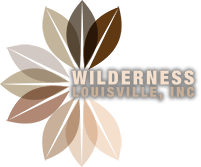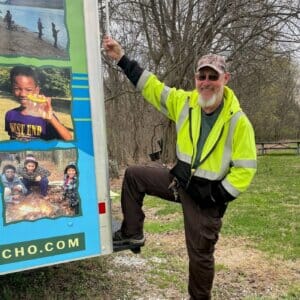About Us
Wilderness Louisville, Inc. is a 501(c)(3) nonprofit organization founded in 2013 with a mission to be champions for Louisville’s natural areas, from Jefferson Memorial Forest – the nation’s largest municipally-owned urban forest – to the ones in your neighborhood. We work in partnership with the Louisville Metro Government’s Department of Parks and Recreation to promote the development, stewardship, and community awareness of these important public spaces.
Mission Statement
Nature is For Everyone: We are stewards of natural areas and champions of nature education, recreation, and youth. Our mission is to provide and sustain quality natural spaces in Louisville and ensure there is equitable access for the community.
Vision Statement
Wilderness Louisville is a national leader in development of and equitable access to natural areas.
Meet the Wilderness Louisville Board of Directors
These individuals dedicate their time in service of protecting and enhancing natural areas for enjoyment by all. Interested in doing the same? Reach out to us at admin@wildernesslouisville.org!
Meet Natural Areas/JMF Staff
These are the wonderful people who go above and beyond to create magic outdoors. Interested in joining this team? Check out our employment page!
Land Acknowledgment
Jefferson Memorial Forest recognizes the impact that settlement has had on Native Americans across the land we currently reside on. We recognize that by not acknowledging the Indigenous peoples here before us, we perpetuate the legacy of violence and forced removal carried out by settler colonists.
There is a myth of the “Dark and Bloody Ground”—that Kentucky was merely hunting and battleground. This legend is disproven by thousands of years of rich Indigenous history both across the state and within Jefferson Memorial Forest itself. The state is primarily Shawnee, Chickasaw, Cherokee, and Osage land. The falsehood that there were no permanent residents was initially a land sales pitch and persists today as a tool to absolve settlers and their descendants from confronting their history of land theft, forced assimilation, and genocide.
The introduction of infectious diseases, stolen land, and predatory treaties attempted to completely destroy Native American ways of life. Though forced expulsion had been taking place for decades, the Indian Removal Act of 1830 barbarously removed many Native Americans and established the murderous Trail of Tears, violently seizing their land with little to no compensation. Although these nations are not federally recognized within the state, we seek to honor the vibrant Indigenous history of the land we occupy, as well as the thousands of Native Americans present in Kentucky today.
Land acknowledgment is only one component of supporting Indigenous communities. We hope our reflection will inspire others to learn about their role, and stand with us in solidarity with Native nations.
Learn what lands you occupy:
https://native-land.ca/
Native-Led Organizations to Support:
IllumiNative
https://illuminative.org/
National Congress of American Indians
https://www.ncai.org/
Coalition to Stop Violence Against Native Women
https://www.csvanw.org/
Greater Cincinnati Native American Coalition
https://gcnativeamericancoalition.com/
Sources
Culture History of Jefferson Memorial Forest
http://eyhuiipthm2.exactdn.com/wp-content/uploads/2022/07/Jefferson-Memorial-Forest-Cultural-History-.pdf
A Native History of Kentucky | Kentucky Heritage Council
https://heritage.ky.gov/Documents/Native_History_KyTeachers.pdf
The People of the Hunting Ground
http://www.thepeopleofthehuntingground.com/about.html
A Guide to Indigenous Land Acknowledgment | Native Governance Center
https://nativegov.org/news/a-guide-to-indigenous-land-acknowledgment/
Indigenous Lands Acknowledgment | Kentuckians For The Commonwealth
https://archive.kftc.org/indigenous-lands-acknowledgment
Dispelling the Myth: Seventeeth- and Eighteenth-Century Indian Life in Kentucky | Preservation Kentucky
http://preservationkentucky.org/wp-content/uploads/2018/10/Dispelling-the-Myth-17th-18th-Century-Indian-Life-in-KY.pdf










































